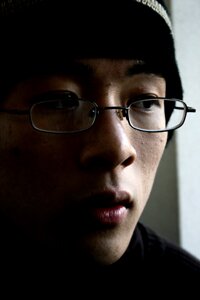Introduction to Obsessive-Compulsive Spectrum Disorders

Obsessive-compulsive spectrum disorders are a group of similar psychiatric disorders. These disorders are characterized by repetitive thoughts, distressing emotions, and compulsive behaviors. The specific types of thoughts, emotions, and behaviors vary according to each disorder. These disorders are:
1. obsessive-compulsive disorder (OCD);
2. body dysmorphic disorder (BDD);
3. hoarding disorder;
4. hair-pulling disorder (trichotillomania); and,
5. skin-picking disorder (excoriation).
Obsessions are recurrent and persistent thoughts, urges, or images that are experienced as intrusive and unwanted. Common obsessional themes include concerns about contamination; harm happening to oneself or others; intrusive sexual thoughts; religious preoccupation and rituals; repeated and excessive doubts about safety and security; the need for symmetry and order; and perfectionism. Because obsessions are unwanted, they create anxiety and distress ...More
Fast Facts: Learn! Fast!
What are Obsessive-Compulsive Spectrum Disorders?
- Obsessive-compulsive spectrum disorders are a group of similar psychiatric disorders that are characterized by repetitive thoughts, distressing emotions, and compulsive behaviors.
- The specific types of thoughts, emotions, and behaviors vary according to each disorder.
- These disorders include Obsessive-Compulsive Disorder (OCD), body dysmorphic disorder (BDD), hoarding disorder, trichotillomania (hair-pulling disorder), and excoriation (skin-picking disorder).
- Obsessions are recurrent and persistent thoughts, urges, or images that are experienced as intrusive and unwanted. Common themes include concerns about contamination, harm happening to oneself or others, repeated and excessive doubts about safety and security, and perfectionism.
- Obsessions create anxiety and distress when they occur and to reduce this discomfort people perform compulsions, which are behaviors or mental acts that a person feels "driven" to perform in response to an obsession. This might include behaviors such as excessive hand washing, re-ordering objects in a specific way, checking on door locks or appliance status, and counting (aloud or silently).
For more information
For more information on the symptoms of Obsessive-Compulsive Disorder (OCD)
For more information on the symptoms of Body Dysmorphic Disorder (BDD)
For more information on the symptoms of Hoarding Disorder
For more information on the symptoms of Trichotillomania (hair pulling disorder)
For more information on the symptoms of Excoriation (skin-picking disorder)
What is a panic attack?
- Panic attacks are a common symptom of many mental disorders, but since Obsessive-Compulsive Spectrum Disorders all have a fearful component to them, it's important to be aware of this issue.
- Panic attacks are sudden, extreme feelings of fear and/or discomfort lasting for a distinct period of time. This sudden surge peaks in intensity within a few minutes, at which point it begins subside.
- There is often a sense of doom and gloom and a powerful desire to escape.
- Common symptoms include palpitations and/or pounding heart; sweating; trembling or shaking; chest pain or discomfort; feeling dizzy; numbness or tingling sensations; hot flashes or chills; fear of losing control or "going crazy" or a fear of dying.
- Panic attacks are a false alarm that triggers the "fight or flight" response system.
- There are 2 types of panic attacks - uncued and cued.
- Unexpected, or uncued, panic attacks seem to come from "out of the blue." They do not have an identifiable source that sets them off. It is believed these occur in response to some kind of life stress.
- Expected, or cued, panic attacks are attacks with an obvious trigger. They occur when a person is exposed to certain situations or objects where panic attacks have happened before. The onset is sudden and occurs immediately upon exposure to the situation or object.
- Cued panic attacks are the type that is most common in the Obsessive-Compulsive Spectrum Disorders.
What causes Obsessive-Compulsive Spectrum Disorders?
- The biopsychosocial model proposes there are multiple and inter-related causes of Obsessive-Compulsive Spectrum Disorders that can be divided into 3 groups - 1. biological causes, 2. psychological causes; and 3. sociocultural or environmental causes.
- The biological causes include factors such as genetic vulnerabilities, as well as neural or brain abnormalities.
- Psychological vulnerabilities result from early life experiences such as trauma, as well as certain dysfunctional beliefs that may develop over time.
- Research has identified several variables that may contribute to a psychological vulnerability. These include: 1) perceived control, 2) cognitive appraisals/thoughts, and 3) cognitive beliefs and distortions.
- The sociocultural causes refer to things we learn by observing others, as well as cultural norms and standards of behavior.
What are the treatments for Obsessive-Compulsive Spectrum Disorders?
- Because there is considerable symptom overlap among these disorders, the basic treatment strategy is similar for each disorder.
- However, each disorder requires some specific treatment techniques to be most effective.
- There are several highly effective treatments available.
- Therapists pick and choose among these various treatments to form an individualized treatment plan.
- The specific combination of treatments will depend upon a number of factors including:
- the unique characteristics and preferences of each person
- their social support system and living environment
- their degree of insight into their disorder and symptoms
- their motivation for treatment and recovery
- the specific disorder
- the presence of co-occurring mental or physical disorders
- previous treatment attempts and their outcomes.
For more information on General Treatments
For more information on treatments for Obsessive-Compulsive Disorder (OCD)
For more information on treatments for Body Dysmorphic Disorder (BDD)
For more information on treatments for Hoarding Disorder
For more information on treatments for Trichotillomania (Hair-Pulling Disorder)
For more information on treatments for Excoriation (Skin-Picking Disorder)
Resources
-
Articles
-
Introduction to Obsessive-Compulsive Spectrum Disorders
- Introduction to Obsessive-Compulsive Spectrum Disorders
- Marc: An Example of the Obsessive-Compulsive Spectrum Disorders
- What Are Obsessive-Compulsive Disorders?
-
Diagnosis of Obsessive-Compulsive Spectrum Disorders
- How Are Obsessive-Compulsive and Related Disorders (OCRDs) Diagnosed?
- Diagnosis: The Signs and Symptoms of Obsessive-Compulsive Disorder (OCD)
- Diagnosis: The Signs and Symptoms of Body Dysmorphic Disorder (BDD)
- Similarities and Differences Between OCD and BDD
- Diagnosis: The Signs and Symptoms of Hoarding Disorder
- Similarities and Differences Between Hoarding Disorder and OCD
- Diagnosis: The Signs and Symptoms of Trichotillomania (Hair-Pulling Disorder)
- Similarities and Differences Between Trichotillomania and Obsessive-Compulsive Disorder
- Diagnosis: The Signs and Symptoms of Excoriation (Skin-Picking) Disorder
- Similarities and Differences Between Skin-Picking (Excoriation Disorder) and Other Obsessive-Compulsive Disorders
- Panic Attacks in Obsessive-Compulsive and Related Disorders (OCRDs)
- Diagnosis: Obsessive-Compulsive Symptoms Due to Other Factors
- Obsessive-Compulsive Disorder Versus Obsessive-Compulsive Personality Disorder
-
Causes of Obsessive-Compulsive Spectrum Disorders
- What Causes Obsessive-Compulsive and Related Disorders?
- Biological Explanations of Obsessive-Compulsive and Related Disorders (OCRDs)
- Psychological Explanations of Obsessive-Compulsive and Related Disorders (OCRDs)
- Sociocultural Explanations of Obsessive-Compulsive and Related Disorders (OCRDs)
- Maintenance of Obsessive-Compulsive and Related Disorders
-
Treatment of Obsessive-Compulsive Spectrum Disorders
- Types of Treatment for Obsessive-Compulsive and Related Disorders
- Exposure and Response Prevention (ERP) Therapy for Obsessive-Compulsive and Related Disorders
- Cognitive Therapy for Obsessive-Compulsive and Related Disorders
- Cognitive Therapy Continued
- Acceptance and Commitment Therapy (ACT) for Obsessive-Compulsive and Related Disorders
- Family Therapy
- Group Therapy for Obsessive-Compulsive and Related Disorders
- Medications for Obsessive-Compulsive and Related Disorders
- Treatment Obstacles for Obsessive-Compulsive and Related Disorders
- Treatment Recommendations for Obsessive-Compulsive Disorder
- Treatment Recommendations Body Dysmorphic Disorder (BDD)
- Treatment Recommendations for Hoarding Disorder
- Treatment Recommendations for Trichotillomania (Hair-pulling) Disorder
- Treatment Recommendations for Excoriation (Skin-Picking) Disorder
-
Obsessive-Compulsive Spectrum Disorders References
- Obsessive-Compulsive Spectrum Disorders References
-
Introduction to Obsessive-Compulsive Spectrum Disorders
-
Questions and Answers
- Anxious About Opinions
- Possible OCD and Anxiety issues
- OCD, Depression
- Is My Anxiety a Normal Reaction?
- Very Harmful Transference
- OCD and Trauma?
- Why do I See Words and Numbers in my Mind...
- OCD
- Unwanted Thoughts
- CBT Therapy and Transference
-
45 more
- OCD
- Am I A Sadomasochist?
- Why Is He So Jealous, Even of My Own Brothers??
- OCD or Not OCD, That's The Question
- How do I Help my Hypochondriac Sister-in-Law?
- Worrying Too Much About Anything.
- Intrusive Thoughts!?
- False Memories
- Eating
- Extremely Scared: I Felt Indifferent Toward an Obsession
- Why Does My Mother Hoard Everything, Including Garbage?
- Delusions and False Memories
- Is it Anxiety? Is it Normal to Be Like That?
- Not Normal
- Please help fix my mom. - Kenny
- Frightening thoughts - fear losing control - please help!
- OCD?
- Saving my Son
- Scary thoughts, dark feelings, help?
- Violent/murderous sexual fantasies
- Counting ritual - Zami - Aug 30th 2008
- OCD
- OCD Cure
- OCD- No feeling
- unwanted thoughts!
- OCD Treatment
- crazy thoughts... all the time
- other symtoms
- Prozac for OCD
- Afraid to touch people
- GETTING FAMILY TO UNDERSTAND
- OCB
- obsessive compulsive disorder
- Proscrastination or Something Else?
- Quitting Therapy
- Is it normal to have thoughts of a significant other
- Brother Not coping well
- Obsessive Research Assistant
- Do I Have OCD?
- OCD And a Lying Husband
- Possible OCD
- Untrusting Patient
- OCD And Behaviour Problems
- OCD vs. OCPD
- Obsessional Man
-
Book & Media Reviews
- Because We Are Bad
- Brainstorm
- Compulsive Acts
- Devil in the Details
- Dirty Filthy Love DVD
- Everything In Its Place
- Getting Control
- Just Checking
- Obsessive-Compulsive Disorder Demystified
- OCDaniel
-
13 more
- Overcoming Compulsive Checking
- Overcoming Compulsive Hoarding
- Overcoming Obsessive Thoughts
- Passing for Normal
- Rewind, Replay, Repeat
- Stuff
- The Man Who Couldn't Stop
- The OCD Workbook
- The Thought that Counts
- Triggered
- Turtles All the Way Down
- Washing My Life Away
- When in Doubt, Make Belief
-
Links
- [1] Articles
- [2] Associations
- [1] Community
- [3] Government
- [6] Information
- [13] Videos
-
Videos
- Why People Hoard
- Ways To Help A Family Member Who Hoards
- Hoarding As A Mental Health Issue
- Classic Profile of Hoarding Disorder
- Causes of Hoarding
- Treating Childhood OCD
- Why are mental disorders often associated with creation?
- The stigma of mental illness
- Treating OCD: What Is Exposure With Response Prevention?
- Understanding Obsessive Compulsive Disorder (OCD)
-
3 more
- You've Heard of OCD, But Do You Really Understand It?
- Mirror, Mirror: Body Dysmorphic Disorder - Part 1
- Mirror, Mirror: Body Dysmorphic Disorder - Part 2
Topics
-
Related Topic Centers
-
Addictions
-
Aging & Elder Care
-
Assessments & Interventions
-
Career & Workplace
-
Emotional Well-Being
-
Life Issues
-
Parenting & Child Care
-
Abuse
-
ADHD: Attention Deficit Hyperactivity Disorder
-
Adoption
-
Autism
-
Child & Adolescent Development: Overview
-
Child & Adolescent Development: Puberty
-
Child Development & Parenting: Early (3-7)
-
Child Development & Parenting: Infants (0-2)
-
Child Development & Parenting: Middle (8-11)
-
Child Development & Parenting:Adolescence (12-24)
-
Child Development Theory: Adolescence (12-24)
-
Child Development Theory: Middle Childhood (8-11)
-
Childhood Mental Disorders and Illnesses
-
Childhood Special Education
-
Divorce
-
Family & Relationship Issues
-
Intellectual Disabilities
-
Learning Disorders
-
Oppositional Defiant Disorder
-
Parenting
-
Self Esteem
-
-
Psychological Disorders
-
Anxiety Disorders
-
Bipolar Disorder
-
Conversion Disorders
-
Depression: Depression & Related Conditions
-
Dissociative Disorders
-
Domestic Violence and Rape
-
Eating Disorders
-
Impulse Control Disorders
-
Intellectual Disabilities
-
Mental Disorders
-
Obsessive-Compulsive Spectrum Disorders
-
Personality Disorders
-
Post-Traumatic Stress Disorder
-
Schizophrenia
-
Sexual Disorders
-
Somatic Symptom and Related Disorders
-
Suicide
-
Tourettes and other Tic Disorders
-
